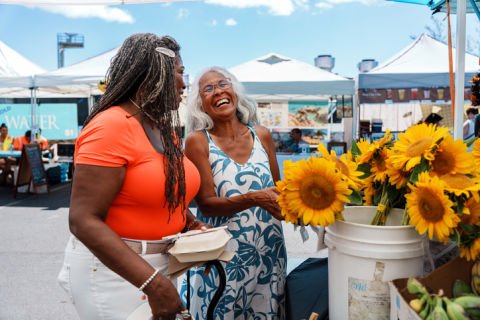Fight to make the gender equity dream a reality
International Women’s Day highlights that women refuse to back down when it comes to issues like gaps in pay and superannuation, and poverty in retirement.

Celebrate International Women’s Day
IWD events will be held across Australia on 8 March, with the focus on the 2024 theme, “Count Her In: Invest in Women. Accelerate Progress”. Details are here.
If you are following IWD on social media, #InspireInclusion and #InvestInWomen are this year’s official hashtags.
On 8 March 2024, we are all invited to “imagine a gender equal world. A world free of bias, stereotypes, and discrimination. A world that’s diverse, equitable, and inclusive. A world where difference is valued and celebrated.”
Those words are from the official International Women’s Day (IWD) website, which also encourages us to “celebrate women’s achievement, raise awareness about discrimination, and drive gender parity”.
IWD was first held in 1911, following a proposal by Clara Zetkin, leader of the Women’s Office for the Social Democratic Party in Germany, at the Conference of Working Women in Copenhagen the previous year.
The first IWD in Australia was in Sydney in 1928, organised by the Militant Women’s Movement, whose members called for equal pay for equal work, an eight-hour working day for “shop girls”, and paid leave.
According to United Nations Women: Australia, IWD is “a day to celebrate women’s achievements and both highlight and work to address barriers that continue to perpetuate gender inequality”.
Many seniors will recall major advances at the political and social level over their lifetimes but there is more to achieve.
Inequality not only affects young women trying to break the glass ceiling, it persists throughout their working life and into their retirement.
Areas of concern include:
Work: Women are more likely to experience fragmented, unpaid, or part-time work. According to the Workplace Gender Equality Agency (WGEA), men’s median annual salary is $11,542 higher than women’s. WGEA also broke down the pay gap for major employers, ranging from relatively low gaps among retailers Woolworths (5.7%) and Coles (5.6%) to a huge gap at Qantas (37%).
Superannuation and retirement income: Women aged 60-64 in 2021 were, on average, set to retire with 25% less super than men of the same age.
Poverty: More older women than men live in poverty, with single women reliant on the Age Pension the most at risk. Women who become renters at an older age are also more at risk of housing insecurity, because the pension is not enough to cover their expenses.
Author and women’s advocate, Kaye Fallick, notes that gender equity in retirement remains a dream for many.
“Having written and commentated on women and retirement for almost 25 years, it’s fair to summarise changes to the situation of women as glacial,” she said.
“The fundamental fact that they earn less, and so have lower super savings can no longer be accepted as ‘just the way it is’.
“This means that super needs to work much better for women who take time out to mother, to care, or for other responsibilities. Living in genteel poverty in retirement should not be the end point for so many Australian women.”
Sources: Official IWD site, Media release from Household Capital, Monash University, WGEA





